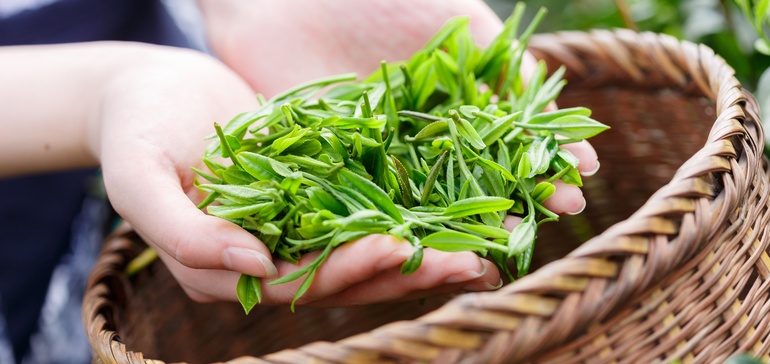Energy drinks are big business. And, despite setbacks in recent years, are still popular among Americans, with projected growth of 52% from 2014-2019, according to data from market research firm, Mintel. In 2015, energy drinks took up 6.2% of the total US soft drink launches, according to Innova Market Insights, and are growing at a faster rate than the global soft drink market. Moreover, Mintel reports that energy drinks grew 56% from 2009 to 2014, recovering from low sales gains in 2013 due to concerns over ingredient safety. In response, organic and healthy ingredients are on the rise in both specialized and market-leading energy drink applications.
Among the popular natural ingredients, green tea extracts, such as Applied Food Sciences’ (AFS) PurTea™ extract, are found in an increasing number of energy drinks, functional or meal-replacement beverages and mixes.
“For the most part the drinks that we see [using green tea extracts], especially in the US market, is the category of energy drinks,” said Lynn Dornblaser, Director of Innovation & Insight at Mintel. “Most of them are smaller companies…[the] one enormous exception is Campbell’s Soup with V8 V-Fusion Energy. They were the ones to push green tea extracts in a big way.”
V8 V-Fusion Energy launched back in 2013, in the midst of the down turn for energy drinks over unsafe ingredients, with a promise of natural energy from green tea. Where that one was a differentiator, applications of green tea extracts are now seen in Monster energy drinks, Steaz and Guru more recently.
The US energy drink market associates green tea extract with one, primary benefit – “natural energy.” Some position themselves as meal-replacement beverages, others, like Lipton Sparkling Teas, might position themselves as teas that provide a natural boost.
As the market stands, the line between beverage categories is incredibly blurred, but continues to grow. So, the question remains, where does the consumer stand?
Label-conscious Consumer Market
Functional foods and beverages impact the market in a big way, racking up a share of $50 billion in the US market in 2014. Natural ingredients, including green tea extract, are expected to reach $2.5 billion in 2020, according to a report from MarketsandMarkets. Many of the leading natural-energy brands – Steaz, Guru, and Celestial Seasonings among them – look for natural ingredients with familiar functions as a way to simplify their ingredient list.
This trend stems from a number of consumer concerns, though the driving force for most beverages is the clean-label movement. Consumers are interested in seeing products with ingredient statements that they can understand.
And, while 60% of consumers associate functional beverages with benefits linked to age-related diseases, according to date presented at the 2015 Functional Foods Summit at Supply Side West, the line between functional beverages and energy drinks (or lack thereof) may not be clear to the consumer. More importantly, 59% of US consumers say that the fewer ingredients a product has, the healthier it is, according to research by Mintel.
Natural antioxidants are on the rise – with a projected market share of over $86 billion in 2016, according to Packaged Facts – and green tea extract is an important source of these antioxidants. In the energy drink market, however, you will more often see the extract associated with the phrase “natural energy.”
“Green tea extract is about providing energy,” said Dornblaser. “You can understand, then, why having green tea extract might be a little more reassuring to consumers than just having the word caffeine. What does that make consumers think of? It makes them think of a cup of tea. It’s familiar.”
But incorporating green tea extract in a way that appeals to modern consumers is difficult. “There is bitterness for one, and limited solubility for another,” explains Chris Fields, VP of scientific affairs at AFS.
Hundreds of guides exist online for decreasing the bitterness of green tea, alone. McCormick, which included matcha green tea among its Flavor Forecast for 2016, suggested pairing the powder with ginger and citrus to balance out the bitter notes. Popular beverages, such as Steaz Organic Energy, pair their green-tea based drinks with stronger fruit flavors to create palatable taste profiles.
“For Applied Food Sciences the process begins by being able to consistently source organic, non-GMO green tea,” said Fields. “Then there are multiple extractions to purify the tea and to filter out a variety of elements that affect the astringent flavor and poor solubility of tea. These are removed to create a highly water-soluble green tea extract with a neutral flavor profile that can be seamlessly formulated into any liquid without altering the overall flavor of the beverage.”
Best of all, consumers know what they’re drinking, what it’s made from and where it comes from.
Article first posted on FoodDive

